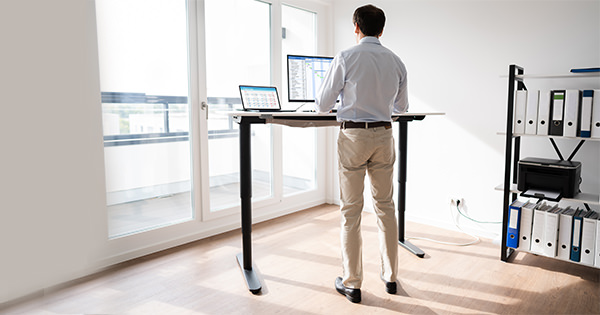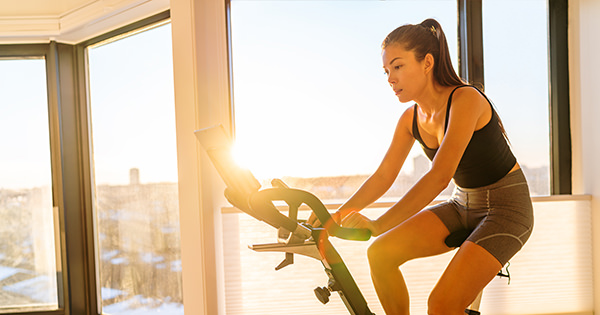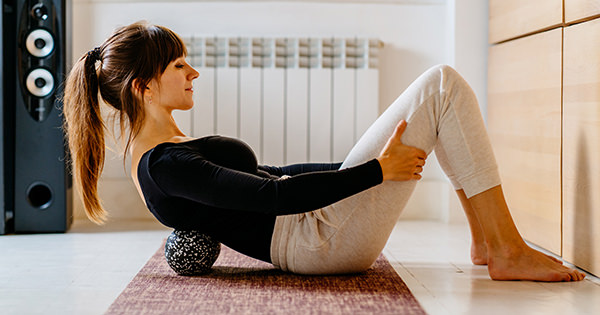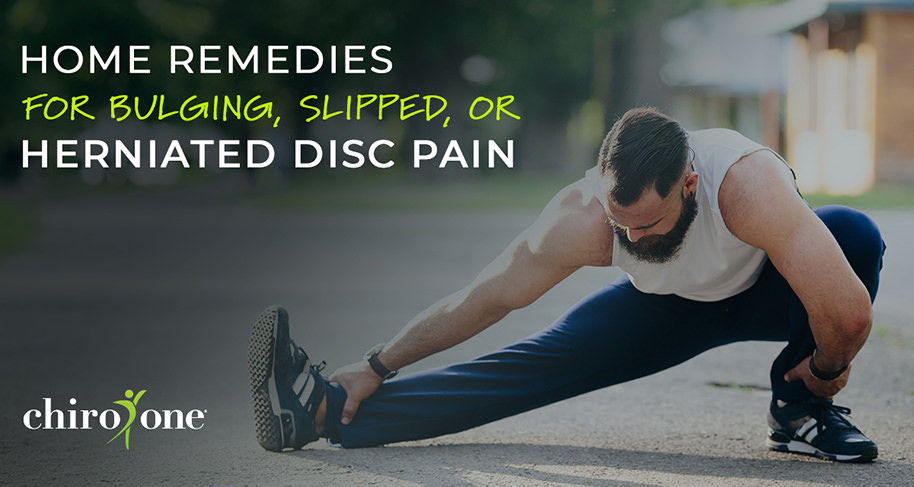How to Alleviate Pain Associated with a Bulging, Slipped or Herniated Disc at Home
February 19, 2021
The spine is an interconnected complex of 24 bones called vertebrae, nerves, muscles, tendons, and ligaments that can be susceptible to injury, especially if too much force is exerted on any one part. Between each vertebrae is a rubbery cushion, or intervertebral disc, that when we are young acts like a shock absorber taking the brunt of activity. As we age those discs lose their elasticity and begin to weaken from degeneration. This naturally occurring process makes adults more susceptible to problems associated with potential bulging or slipped (i.e. herniated) discs.
Whether you are experiencing neck, back, or referred pain from a known issue with a disc, or you suspect that you may have a bulging or herniated disc, the following at-home remedies can help relieve pain associated with your condition. Use in conjunction with chiropractic care to maximize relief and long-term results.
*Please keep in mind that these treatments do not replace seeing a specialist for a more thorough diagnosis. If your condition continues to persist, consider seeing a chiropractor that specializes in herniated, bulging, and slipped discs as soon as possible
What Is and Could I Have a Bulging, Slipped or Herniated Disc?
Intervertebral discs are composed of a tough, rubbery outer membrane (annulus) surrounding a soft, jellylike center (nucleus). A bulging disc is when the outer annulus begins to bulge out of the vertebral space in a fairly even circumference. Imagine a hamburger being pressed between two buns.
A herniated disc, often called a slipped disc, occurs when some of the nucleus pushes out through a tear in the annulus to irritate the surrounding tissues and nerves. Think of a jelly donut that has a very small bite taken out of it so that the filling begins to ooze out. Herniated discs are more likely to cause pain because they generally protrude further than a bulging disc and begin to irritate nearby nerve roots.
Signs and symptoms relating to bulging or herniated discs:
- Local or referred pain. Depending on the location of the herniated disc and whether or not it is pressing against a nerve root you may feel pain in the neck, mid-back, lower back, or sacrum that refers to a correlating extremity. For instance, if you have a herniation between your L4-L5 (low-back, lumbar region) then pain may refer to the buttocks, thigh, and calf.
- Numbness or tingling. Due to irritation of the nerve, people with a herniated disc often have localized or referred numbness, tingling, and/or radiating pain.
- Weakness. Muscle weakness can occur due to the compromised nerve(s). An example would be a loss of hand grip-strength due to a herniated disc in the neck.
So what can you do to manage or heal from your condition?
Relieve Pain with Heat and Cold Therapy
Alternate heat applications and cryotherapy (cold therapy) to alleviate muscle tension that is commonly present with a herniated disc. When the musculature is irritable or tight, heat softens the tissue and brings more blood flow to the area to encourage healing. Cryotherapy decreases the temperature which produces an analgesic and anti-inflammatory effect, thus reducing pain. The general rule of thumb is to use ice for acute inflammation (apply for 10-15 min) and use heat for muscle stiffness (apply for no longer than 20 min).
Below are a few at home suggestions:
- Apply heat in the morning or before moderate activity/stretching to decrease muscle tension.
- Apply heat periodically throughout the day to relax the affected muscles.
- Use a cold pack to reduce inflammation and provide pain relief periodically or after moderate activity/stretching. (Make sure to use a thin towel between the ice and your skin to act as a physical buffer.)
- Take a warm bath or shower at the end of the day to relax your body.
Reduce Inflammation and Manage Pain with NSAIDs
Nonsteroidal anti-inflammatory medications (NSAIDs), like Tylenol and Aleve, can provide significant pain relief by reducing inflammation. These over-the-counter medications should be taken per the instructions and approved by your doctor if you are taking alternative medications.
Be Conscientious of Your Body Posture

Listen to your body’s sensations, learn what body movements or positions aggravate your neck or back, and be conscientious of your body posture throughout the day. You want to minimize the amount of pressure placed on your herniated disc, therefore avoid sleeping on your stomach, standing or sitting for long periods of time, wearing high heels, and engaging in repetitive movements that irritate the area. Focus on having good posture as you stand, walk, or sit, and give your spine breaks throughout the day by going for a brief walk if you typically work at a desk.
Engage in Moderate Physical Activity to Release Endorphins

Depending on the level of pain you are in, engaging in low-impact aerobic exercises can be incredibly helpful. Although it may feel counterintuitive, the added activity helps release endorphins which in turn improve your mood and reduce the mind’s perception of pain. It also helps strengthen your spine’s supportive musculature and mobilize the joints associated with the potentially affected extremity. Ride a stationary bike, engage in a mild yoga practice, go swimming, or do water aerobics. If you’re not sure which activity is right for you, ask your chiropractic care provider.
Myofascial Release and/or Massage

Although myofascial tension may not be the original source of your neck or back pain, it could be a secondary source that relates to your herniated disc. Myofascial release is a form of manual therapy that can be applied at home with the proper techniques and tools. Like a massage, you can work on areas of your body to relax and restore function to the muscle and their associated joints so that you experience pain relief.
Below are a couple at home suggestions:
- Use a lacrosse ball or massage cane to put pressure on tender points (i.e. trigger points) along your back. Maintain 1-2 minutes of pressure to help release the muscle.
- Use a foam roller to roll out your IT bands, glutes, and back muscles. Be careful not to overdo it and if you are experiencing an increase in pain while rolling, please stop.
Note: If you experience an increase in inflammation afterwards, apply ice. If you need more specific instructions on how to apply these techniques see a chiropractor who specializes in Myofascial Release Therapy near you.
Find a Bulging or Herniated Disc Chiropractor
Chiropractic care is a safe and effective way to treat pain associated with a bulging or herniated disc. By utilizing a comprehensive report of the patient’s history, performing a physical examination and potentially taking digital images, a chiropractic doctor can diagnose the specific type of disc problem you are experiencing. In some cases, your chiropractor may need an MRI to be able to prescribe a suitable treatment plan.
Chiropractors have the ability to skillfully restore misaligned vertebrae and address herniated discs that are putting pressure on nearby nerves. The adjustments can lessen pain associated with the compression, ease muscle spasms, promote nerve function once things are realigned, and give patients progressive mobility as their bodies continue to heal. With the expertise and guidance of a chiropractor you will learn more about your specific condition, which at home remedies will be best to complement your customized treatment plan, and how you can restore function and alleviate pain associated with a herniated disc.
Make an appointment to start your wellness plan today so that you can experience short and long term pain relief from a herniated or bulging disc.

